Changing a bike tire might not seem like an especially important life skill, but if you ride a bike in any capacity, it’s a skill you should learn. No one ever plans on having their ride interrupted with a flat tire, but flat tires are one of those annoyances that every rider has the displeasure of experiencing at one point or another. By thinking ahead and taking some time to learn how to change a flat, the hassle of having to change a tire remains just that: an annoying interruption, but not the end of your ride.
If you want to successfully change your bike tire, then before even learning the “how” of it, you first need to know and collect the “what.”
In other words, you need to be prepared, which means having a fix-a-flat kit that you take with you on each ride. At the very least, you should include the basic materials required to effectively fix your flat; what you’ll need will depend on whether you’re riding tubeless or tubed.
Putting together a fix-a-flat kit might seem like an afterthought, but having one on hand might be the difference between a minor disruption to a ride and a major aggravation. If you end up with a flat, remember - always find a safe place, away from traffic and other possible dangers, before working on your bike.
The first step in changing a flat tire might seem obvious, but here it goes: remove the wheel.
If your tires are tubeless and you have a tubeless repair kit, then you might be able to skip this step. If the damage to the tire is a simple puncture, you can just plug it without taking the wheel off. However, if you find that the damage to the tire is extensive enough to where plugging it won’t resolve the issue, then the wheel will need to be removed. To remove the wheel from your bike, start by flipping it upside down.
Pro tip: You might find it easier to work on your bike when it’s upside-down. When flipping your bike, remove the computer from the handlebars to avoid scratching it.
Removing the rear wheel might seem intimidating at first, particularly when you realize that the chain and derailleur are located in the rear. However, the process of removing the back wheel isn’t much more difficult than removing the front, especially if you take your time. To begin, first shift the bike into the smallest sprocket, creating slack in the chain for easier wheel removal and installation. Raise the bike by the saddle and while pedaling with your hand, use the right shift lever to shift gears. Repeat this, using the left shift lever, so that the chain ends up on the smallest chainring in the front as well.
However, the process of removing the back wheel isn’t much more difficult than removing the front, especially if you take your time. To begin, first shift the bike into the smallest sprocket, creating slack in the chain for easier wheel removal and installation. Raise the bike by the saddle and while pedaling with your hand, use the right shift lever to shift gears. Repeat this, using the left shift lever, so that the chain ends up on the smallest chainring in the front as well.
While typical wheel removal requires that you open the brake if you’re addressing a flat tire, then it’s likely that the tire has already lost enough air so that it slides out easily. If your bike is equipped with disc brakes, then you’re in luck because the wheels can be removed without touching the brakes. Quick releases that hold the wheel in place are especially common. To loosen the wheel via quick release, pull - do not twist - the lever out and away from the frame until it is completely open. You should be able to remove the wheel with ease by carefully lifting the bike by its saddle and letting the wheel fall out.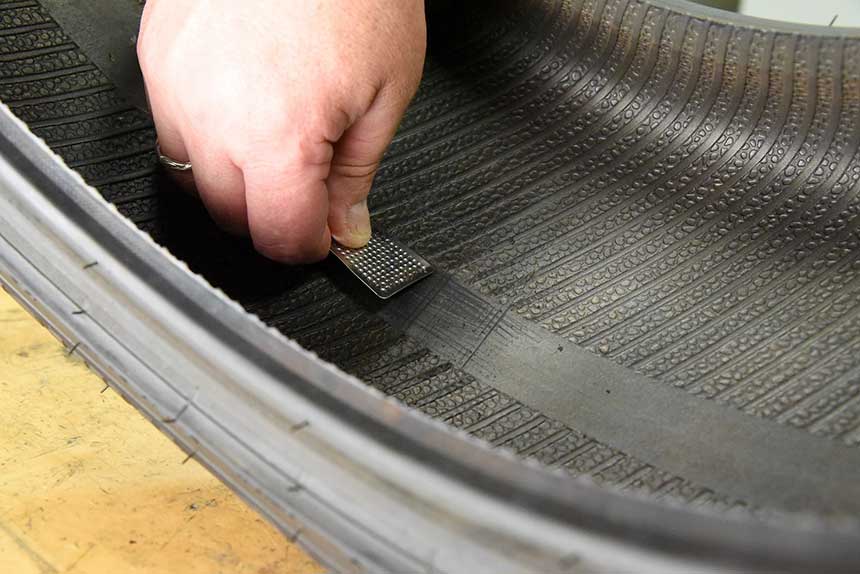 If it doesn’t fall on its own, hitting it with the palm of your hand gently should be enough to make it drop. If it still doesn’t come out, then check to make sure the chain and derailleur aren’t stopping it. If they are, lift your bike by its saddle and, while holding it up, reach around with your other hand to pull back the derailleur and consequently, the chain. Some derailleurs are equipped with a clutch, requiring that you release the clutch and then remove the axle. Push the derailleur cage towards the crank and let the wheel drop. At no point should you find yourself trying to force anything to move.
If it doesn’t fall on its own, hitting it with the palm of your hand gently should be enough to make it drop. If it still doesn’t come out, then check to make sure the chain and derailleur aren’t stopping it. If they are, lift your bike by its saddle and, while holding it up, reach around with your other hand to pull back the derailleur and consequently, the chain. Some derailleurs are equipped with a clutch, requiring that you release the clutch and then remove the axle. Push the derailleur cage towards the crank and let the wheel drop. At no point should you find yourself trying to force anything to move.
Once the wheel has been removed, it’s time to address the tire itself.
Standard tires are designed with an inner tube, which is inflated with air. While relatively inexpensive to replace, making them a popular option, tubes can be punctured or pinched flat relatively easily. Tubeless tires don’t have an inner tube and are instead equipped with an airtight rim that the tire snuggly rests in.
If you’re running tube, then you’ll need to remove it; if you’re running tubeless, you’ll need to patch it with a tire plug. Tire plug kits are sold at most reputable bike shops and consist of a strips of rubber and an insertion device, requiring no other equipment or changing out hardware. Most tubed tires can be converted to tubeless.
To remove the tire, you’ll need to use your tire levers. To do so, insert the flat end of the lever under the bead. Place a second lever under the bead and move along the rim until the tire is off. In most situations, you can reinstall the replacement or a patched tube without completely removing the tire. By breaking the bead on just one side, you will save a lot of time and greatly simplify the process.
While many would recommend you run your finger along the tire to search for the culprit of your flat, doing so could also result in you having to do some patchwork on your finger, too. If whatever punctured your tire is still there and it’s capable of piercing a bike tire, then your finger stands no chance against it. Before doing a hands-on analysis of the problem, visually inspect the tire, both inside and out, first. It might take longer, but you’ll be able to avoid a finger cut and maybe even a tetanus shot. You can also pack cotton pads or use something else to create a barrier between your finger and the sharp object that it might encounter, but there’s still a risk of injury . Tire levers are used for the removal of tires, but you can also run one along the tire for inspection purposes if you prefer playing it safe.
Before doing a hands-on analysis of the problem, visually inspect the tire, both inside and out, first. It might take longer, but you’ll be able to avoid a finger cut and maybe even a tetanus shot. You can also pack cotton pads or use something else to create a barrier between your finger and the sharp object that it might encounter, but there’s still a risk of injury . Tire levers are used for the removal of tires, but you can also run one along the tire for inspection purposes if you prefer playing it safe.
If both the visual and tactile inspections fail, reinflate the tire to see if you can hear the air leaking out of the puncture point. If you find only one puncture hole, then you’re most likely looking at road debris as being the culprit. Depending on the location and manner in which your tire has been punctured, a pointed tool, such as a screwdriver, can be used to push out the object in question before it works itself inward and creates additional punctures. If you see two holes next to each other, then it’s likely that you’re dealing with a pinch-flat, which means your flat wasn’t caused by road or trail debris; it was caused when the tube got itself pinched between the tire and rim.
Patching tubes is an excellent option for anyone who prefers pinching a few pennies, going green by reusing, or being resourceful when there are no more spares. Patch kits are available exactly for this purpose and come with everything you need need in order to get the job done. Patch kits also happen to be very compact so they are a perfect backup, even if you prefer to replace the tube outright.
If patching is your thing, then you’ll want to start by cleaning the affected area and then roughing the surface with an emery cloth or sandpaper. Kits come with two kinds of patches: glueless and those required glue. If your kit has glueless patches, then it’s basically like putting on a bandaid: peel off the backing, place it over the hole, and press with firm pressure. If your patches require glue, then simply add a thin layer of glue to both the tube and the patch. Once the glue has reached a tacky consistency, place the patch and press firmly until you’re sure it’s solidly in place.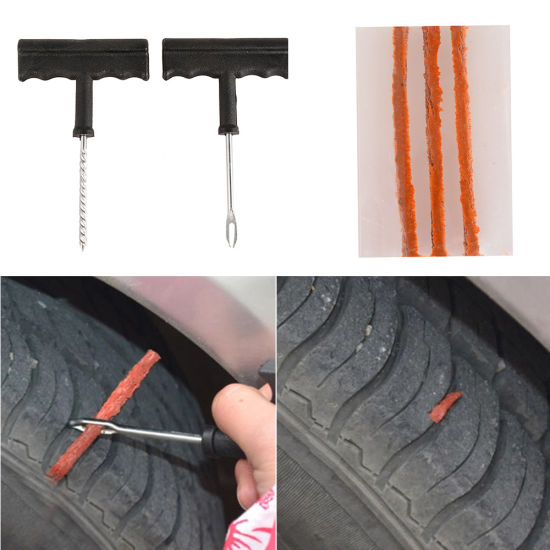
There are some flats that are simply too severe to patch. In those circumstances, you’ll need to skip this step and simply install a new tube.
To install your tube, you’ll start by using your pump to inflate it just enough so that it obtains its form, making it easier for installation and reducing your chances of suffering a pinch-flat. Starting with the valve stem, put the tube on the rim and insert the stem straight through the valve hole. Carefully work the tire back onto the rim by rolling the bead away from yourself using your hands, not a lever; levers increase the likelihood of accidentally puncturing the replacement tube. Upon reaching the valve stem, wrap sides of the tire bead low into the rim and push up on the stem to get the tube into the tire.
Pro tip: if you align the branding on the tire with the stem, you’ll be able to locate the stem much quicker next time.
To avoid having to deal with another flat, it’s important that you take extra care to ensure that the tire bead isn’t pinching the tube.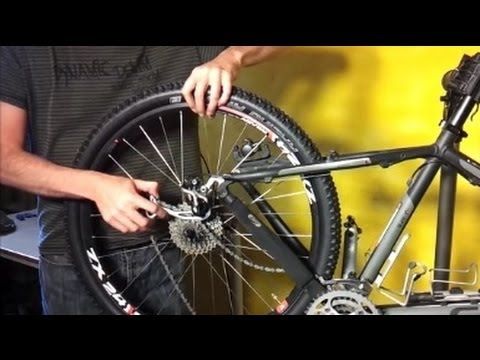 Do this by grabbing the tire with both hands and "massaging" and twisting it side-to-side as you work around the rim. This will ensure that the tube is positioned correctly inside the tire, away from the bead that can pinch it.
Do this by grabbing the tire with both hands and "massaging" and twisting it side-to-side as you work around the rim. This will ensure that the tube is positioned correctly inside the tire, away from the bead that can pinch it.
Now is when you find out whether or not your efforts paid off; it’s time to inflate your tire. To do this, you can use either a CO2 cartridge, a minipump, or both. Each method of inflation has its pros and cons, so ultimately, choose what’s most comfortable for you. If possible, equip yourself with both.
CO2 cartridges are highly effective, especially when your goal is to inflate to higher pressures, but they are a one shot deal, so there’s no reusing them. It’s a good idea to practice tire inflation at home using a CO2 cartridge to ensure that when the inevitable occurs, you don’t blow out your tube or waste the cartridge, and get left stranded. The key to using a CO2 cartridge is to ensure that the inflator is properly connected to the valve stem.
Having a minipump in your arsenal is highly recommended so that you always have a backup method for tire inflation, even if it’s not as easy to use as CO2 cartridge. Having a pump with a hose is also strongly suggested because it allows you to push the pump against the ground for better leverage, allowing you to accomplish higher pressures; pumps that attach directly to the valve stem don’t offer this advantage and might cause damage to the valve stem or even the rim when used improperly. Combination mini pump/CO2 inflators are also available.
As you’re inflating to your desired PSI, double and triple check the bead so that you’re sure it’s sitting in the rim correctly. Only after you’re certain that everything is in its proper place should you reattach your wheel.
Last but not least, it’s time to install the wheel. The processes of replacing the front and back wheels vary a bit, but neither is especially harder than the other, as long as you know how to effectively get the job done.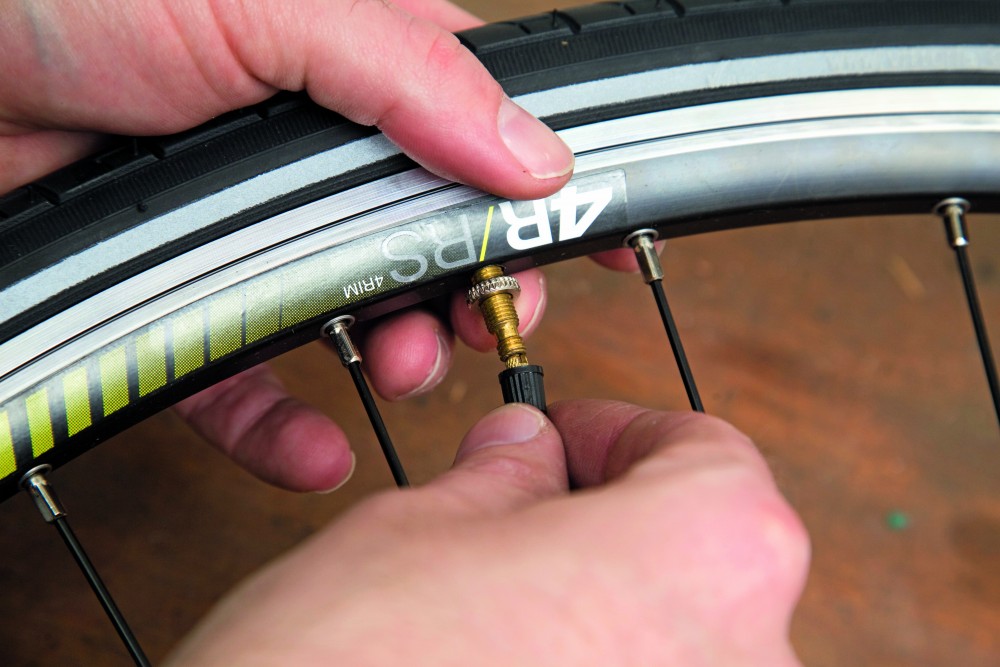
To attach the front wheel, first line up the fork dropouts with the axle of the wheel and gently lower the fork onto the axle. Carefully push down on the handlebar to check for the proper placement of the axle in the dropouts. It’s important to be mindful that the quick release or thru-axle lever is on the opposite side of the drivetrain and not touching the frame. Hold the quick release lever in place as you tighten the bolt. If you find that the lever closes too easily or ends up making contact with the frame, just open the lever and tighten the bolt a bit more. Be careful that you don’t over tighten the bolt, as it should be tightened just enough to allow you to use firm pressure when closing the quick lever. If your bike is equipped with rim brakes, don’t forget to reconnect, adjust, and check them for functionality.
If your flat occurred on the rear wheel, then lay the top of the chain around the smallest cog on the cassette and make sure the frame dropouts line up with the axle. As you gently push the wheel back into the frame, take care to also pull the derailleur down and back so that it doesn’t get in the way. In the event that the wheel doesn’t go in easily, remove it and try again. If you’re sure that the wheel properly placed, then it’s time to close the quick release (and rim brakes if applicable) or insert the thru-axle into the frame and hub and thread it shut. The final test in determining whether your bike is ready to continue its journey is by lifting the rear wheel and spinning the cranks. If it runs smoothly, then you know you’re good to go.
As you gently push the wheel back into the frame, take care to also pull the derailleur down and back so that it doesn’t get in the way. In the event that the wheel doesn’t go in easily, remove it and try again. If you’re sure that the wheel properly placed, then it’s time to close the quick release (and rim brakes if applicable) or insert the thru-axle into the frame and hub and thread it shut. The final test in determining whether your bike is ready to continue its journey is by lifting the rear wheel and spinning the cranks. If it runs smoothly, then you know you’re good to go.
Flat tires are already unplanned and unexpected; planning ahead by prepping a fix-a-flat kit and learning how to change your tire can ease your mind for such unfortunate circumstances, but what do you do when even fixing your flat doesn’t go as planned? Read on for some quick, easy solutions when even flat tires don’t go your way.
Small, unfixable punctures.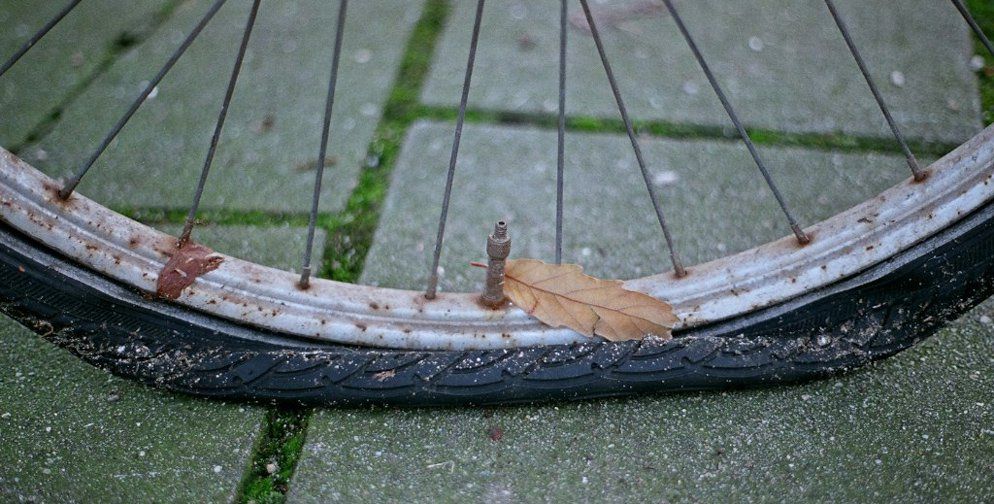 Super glue is already a life-saver in so many situations, so why should cycling prove to be any different? Super glue is a great quick fix for smaller punctures that might not be fixable otherwise, albeit temporary.
Super glue is already a life-saver in so many situations, so why should cycling prove to be any different? Super glue is a great quick fix for smaller punctures that might not be fixable otherwise, albeit temporary.
Large, unfixable punctures. If you find that you end up with a hole that’s simply too big to repair, then it’s time to resort to some out-of-the-box thinking. Cut out the damaged innertube section and tie the two ends together. It’ll be obvious to you that it’s not a perfect solution, but you should at least be able to reach about 50 psi, which is certainly enough until you can better resolve your tire situation.
Unfixable tire and sidewall gashes. In the event that your tire or the sidewall of your tire ends up sliced or gashed beyond standard repair, don’t despair; make a boot instead. Using a dollar bill, old gel wrapper, or piece of duct tape to cover the hole from the inside is a quick, easy way to resolve your emergency until you get home. It might not be ideal, but it should suffice until a more permanent resolution can be made.
Learning the skill of bike tire repair can be thought of as a form of insurance: you might not want it and you might never use it, but if ever find yourself in a situation where you need it, you’ll be glad it’s there. The folks at Velosurance are all cyclists and understand that it’s only a matter of time before an unfortunate circumstance arises. From gap medical to liability, vehicle contact protection to even roadside assistance - for when you’ve got a flat and are fresh out of options - Velosurance offers a highly customizable policy to provide coverage for nearly any cycling associate risk. Whatever your needs, chances are, there’s a policy for you.
Changing a bike tire after getting a flat is a relatively easy fix—as long as you know how to handle it. Whether you ride on smooth pavement, rough gravel, or rocky singletrack trails, it’s bound to happen eventually, so you might as well prepare yourself with both the necessary tools and the bike repair knowledge you need address the problem.
Below, we detail everything you need to know about how to change a bike tire, including the bike tire repair tips you need to succeed.
First things first though—for tools, you should always carry tire levers, a correctly-sized spare tube, and an inflation device, be it a mini pump or CO2 cartridge. You may also want to consider a patch kit or tire plug, which can come in handy for certain riders. And if you run tubeless tires, scroll down to skip to the tubeless section. When you’re ready to go, here’s your step-by-step guide.
Start by removing the wheel. Keep your bike upright, and if it’s a rear-wheel flat, shift your drivetrain into the hardest gear. If your bike has rim brakes, which many bikes still do, you may also need to loosen the brake.
If your bike has rim brakes, which many bikes still do, you may also need to loosen the brake.
Next, position yourself on the non-drive side of your bike (opposite the chain) and either open the quick release or unthread the thru-axle to remove the wheel.
Now you can remove the tire. Hook the rounded end of one tire lever under the bead (the outer edge) of the tire to unseat it. Fix the other end to a spoke to hold the lever in place and keep the unseated tire from popping back into the rim. Then hook the second lever under the bead next to the first, pushing it around the rim clockwise until one side of the tire is off. You don’t need to completely remove the tire.
Once the tire is loose, pull out the old tube (if applicable) and look for the source of the flat, which could be a thorn, piece of glass, or some other sharp object.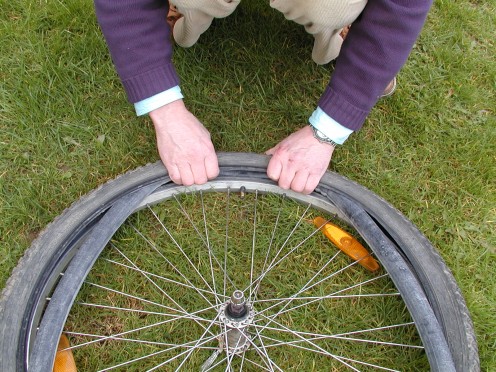 Carefully run your fingers along the inside of your tire and rim, making sure nothing sharp is left behind; otherwise, you risk getting another flat. Also inspect the outside of the tire, again looking for any foreign object that might still be stuck in the rubber.
Carefully run your fingers along the inside of your tire and rim, making sure nothing sharp is left behind; otherwise, you risk getting another flat. Also inspect the outside of the tire, again looking for any foreign object that might still be stuck in the rubber.
If you’re using tubes and want to do a little detective work, pump some air into the old one to find the leak. Two holes side by side indicate a pinch-flat, where the tube gets pinched between the tire and rim. A single hole is a sign that your flat was most likely caused by a sharp object. By lining the tube up with the tire using the valve as a point of reference, you can double check the area where the hole is to ensure the culprit is removed.
If you’re the thrifty type who likes to reuse old tubes, or if you’ve gotten multiple flats on your ride and have no more spares, then you can patch your tube with a patch kit. If you have a new tube, skip to the next section.
Start by cleaning the punctured area and roughing the surface with an emery cloth. For a glueless patch, simply stick it over the hole and press firmly. For a patch that requires glue, add a thin layer of glue to the tube and patch. Wait for the glue to get tacky, then apply the patch and press firmly until it adheres.
If you prefer to reuse old tubes or ran out of spares, you can try to patch the hole with a patch kit.
Katja Kircher//Getty ImagesNow inflate your new or patched tube just enough so that it holds its shape. This makes it easier to place inside the tire. Next, with the valve stem installed straight through the rim’s valve hole, position the tube inside the tire. Work the tire back onto the rim with your hands by rolling the bead away from yourself. Try not to use levers to reseat the tire, as you could accidentally puncture your new tube. When you get to the valve stem, tuck both sides of the tire bead low into the rim and push upward on the stem to get the tube inside the tire.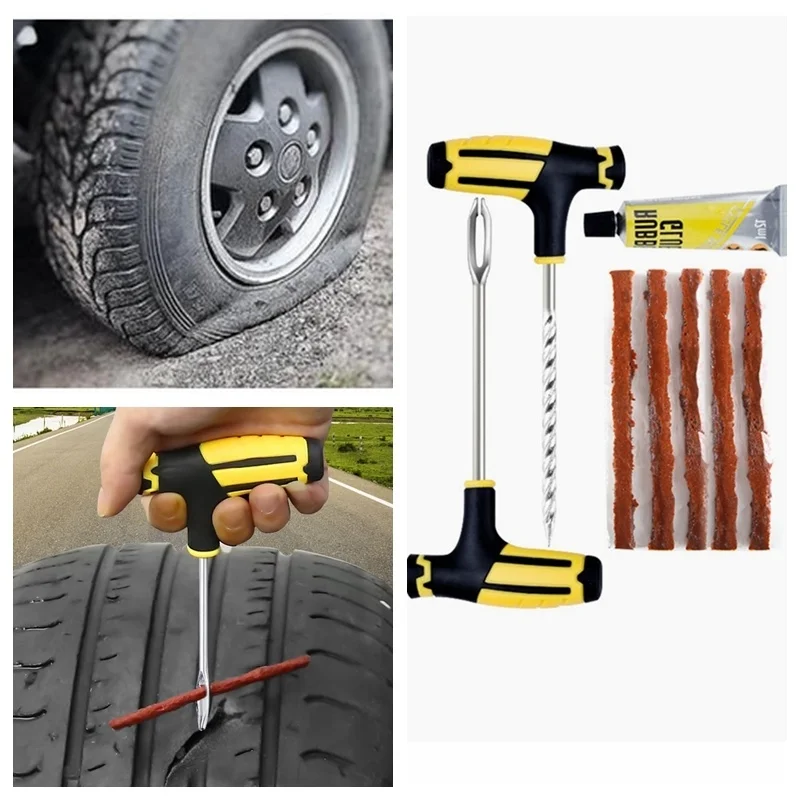
Check to make sure the tire bead isn’t pinching the tube by gently pushing the tire to the side as you work your way around the rim. Then inflate to the appropriate PSI and check that the bead is seated correctly.
$50 at Amazon
Credit: Silca$8 at Amazon
$6 at Amazon
Credit: Park Tool$40 at Walmart
Credit: REIIf everything looks good, reattach your wheel, making sure the quick release or thru-axle lever is on the opposite side of your drivetrain.
If you had a rear-wheel flat, lay the top of the chain around the smallest cog on your cassette and carefully push the wheel back into the frame. Close your quick release (and rim brakes if applicable) or insert the thru-axle back into the frame and hub and thread it closed.
Close your quick release (and rim brakes if applicable) or insert the thru-axle back into the frame and hub and thread it closed.
Finally, lift the rear wheel and spin your cranks once to make sure everything is back in place and operating smoothly. If all is good to go, get back on your bike and enjoy the rest of your ride.
Trevor Raab
For tubeless setups—all but standard in mountain biking and becoming increasingly popular on gravel, cyclocross, and even some road bikes—your sealant should do the trick without you even realizing it. Be sure to check your sealant regularly (about every three to six months) to make sure the tire has enough and that it hasn’t dried out.
But in the event of a bigger puncture or side-wall tear, you may need a tire plug to stop air loss. Plug kits come with a small strip of rubber and an insertion device, which allow you to plug the hole without even removing the wheel. Once you find the puncture and insert the rubber plug, re-inflate your tire to the appropriate pressure to see that it’s holding air. If so, start riding again, and check the repair every so often to make sure it’s holding fast. You could also add more sealant, but you’d need to carry a valve core removal tool and a small bottle of sealant.
Once you find the puncture and insert the rubber plug, re-inflate your tire to the appropriate pressure to see that it’s holding air. If so, start riding again, and check the repair every so often to make sure it’s holding fast. You could also add more sealant, but you’d need to carry a valve core removal tool and a small bottle of sealant.
Trevor Raab
If air loss is coming from a puncture bigger than a plug fix, you could try a patch or a boot on the tire. But fair warning: It’ll likely be difficult to get a patch to adhere to your sealant-coated tire without thoroughly cleaning the area. Adding more sealant or a patch could create another problem, too, by letting all the air out and breaking the seal between the rim and tire. It’ll likely be difficult to reseat the tire bead onto the rim on the spot. The easiest way to ensure your tire holds air at this point is to simply use a spare emergency tube to get through the ride and address it at home or at a bike shop.
$155 at Trek Bikes
$63 at Amazon
Keep It Clean
$10 at notubes.com
Precisely measure sealant and install with no mess.
Mid-Ride Repair
$60 at dynaplug.com
Brass-tipped plugs make fixing bigger punctures easy.
Jessica Coulon
Service and News Editor
When she’s not out riding her mountain bike, Jessica is an editor for Popular Mechanics. She was previously an editor for Bicycling magazine.
Contents
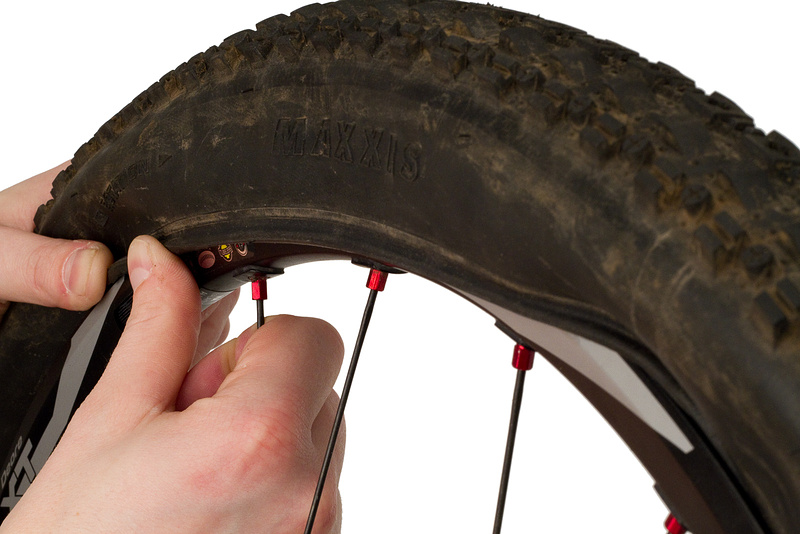 Sooner or later, the wheel of even the most advanced bike will present surprises in the form of rim deformations, damage to the spokes, a burst tube or even the entire tire, as well as wear on the sprocket system for the rear wheel.
Sooner or later, the wheel of even the most advanced bike will present surprises in the form of rim deformations, damage to the spokes, a burst tube or even the entire tire, as well as wear on the sprocket system for the rear wheel. Experienced cyclists welcome self-repair of wheels, and for good reason: it's cheaper, and you'll gain skills. You can also contact a good workshop, where the problem will be solved, perhaps faster, but not free of charge. Moreover, the service is hardly located under the windows of the house, so the bike will have to be dragged, which is not very pleasant. To avoid this, it is better to tinker a little yourself, especially since there is nothing complicated in the wheels of the bike. Today we’ll talk about how to remove the rear wheel from the bike, repair it and assemble it correctly.
It is unlikely that the idea of unscrewing the chassis from the bicycle frame will come to mind, unless, of course, a person specializes in bicycle disassembly. But this is a completely different case. Removal of the rear wheel will be required if the following problems are observed:
But this is a completely different case. Removal of the rear wheel will be required if the following problems are observed:
This includes the planned replacement of the rear sprockets and chain.
The bike must be turned over and placed on the saddle and handlebars before being removed. Canopies in the form of a mirror, a bell and a lantern are best removed in advance so as not to damage them under the weight of the frame. V-brakes are first released and removed, otherwise they will not allow the wheel to be pulled out freely. With disc models, everything is easier - you can immediately remove the wheel.
It must be said that the removal process itself consists only in turning off the eccentric or unscrewing the fixing nuts from the hub axle, whoever has what. If the mount is an eccentric, simply unscrew the handles and twist the wheel.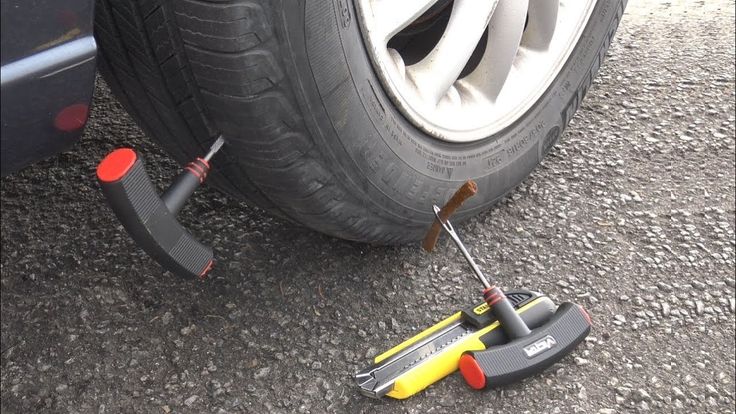 The nut fastening is loosened with one or two keys.
The nut fastening is loosened with one or two keys.
Usually one wrench of the appropriate size is enough to remove the nuts one by one. If the bushing axle rotates, then the nuts are untwisted simultaneously in different directions. It is recommended to use an open-end wrench or box wrench. The adjustable version is undesirable, since its thick horns “eat up” the corners of the nut due to a loose fit and slip.
To remove the tire and remove the damaged inner tube, the remaining air must be removed: the cap is unscrewed and the wheel is lowered by continuous pressure on the nipple. If there is no air in the tire, which happens more often with punctures, then simply unscrew the cap.
To remove the tire, you will need special pry bars. Of course, the camera can be pry off with an ordinary screwdriver and even with a knife, but it is better to have a professional tool. With the help of fittings, the tire is hooked from the side opposite to the nipple. As soon as it begins to shrink, you need to pry the beads a little further, until there is enough free part of the tire, and it can be safely pulled off the rim.
As soon as it begins to shrink, you need to pry the beads a little further, until there is enough free part of the tire, and it can be safely pulled off the rim.
Removing tires with spatulas
Be very careful not to damage the rim, do not use too much force. When the tire is removed, remove the damaged chamber and install a new one. The nipple is threaded into the hole of the rim, then the chamber is evenly distributed around the circumference.
Attention! The camera must lie flat, without kinks, otherwise you will have to reinstall it. At the bottom of the rim, there must be a flipper that protects from the points of the spokes. If it is torn, you need to install a new one or get by with two layers of thin electrical tape.
From above, the outer part of the tire is put on the rim, this time from the side of the nipple. When installing a tire, the correct direction of the tread pattern must be taken into account.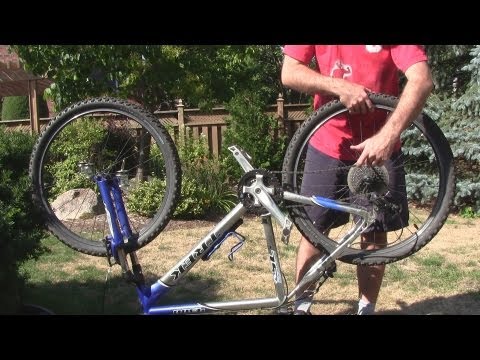 Arrows are usually drawn on the tires, and when the bike is upside down, the direction forward is backwards in the down position. It's easy to go wrong with a speed mountain bike rear wheel, though, thanks to the cassette on the side. After installation, the chamber is inflated.
Arrows are usually drawn on the tires, and when the bike is upside down, the direction forward is backwards in the down position. It's easy to go wrong with a speed mountain bike rear wheel, though, thanks to the cassette on the side. After installation, the chamber is inflated.
The hub is one of the parts of a bicycle wheel that requires periodic maintenance. On average, you need to look into it once every 2000 km, in terms of time it is 2-3 months of active driving. If the wheel is already creaking and there is a decrease in the efficiency of rotation, in other words, the bike rides worse, then it's time to remove it and inspect the hub.
The main problem with the bushing is play and insufficient bearing lubrication. Due to a misfit or increased friction, parts begin to wear out rapidly. If the wheel has not been serviced for a long time, the bearings may even crumble. To gain access to the hub bearings, you will need to temporarily get rid of the rear sprockets.
The reverse gear is removed using a puller and a so-called whip. Removing the cassette is a short process, but it will take a lot of effort to unscrew it from the wheel. Step by step it looks like this:
Removing the sprockets with a puller
Before disassembling the hub, loosen the spoke tension slightly. This can be done using a round key with knocked out holes for different diameters of the spokes. It doesn't need to be loosened much, a quarter of a turn is enough. If the bushing needs to be replaced, then the spokes must be untwisted enough to easily pull it out of gear.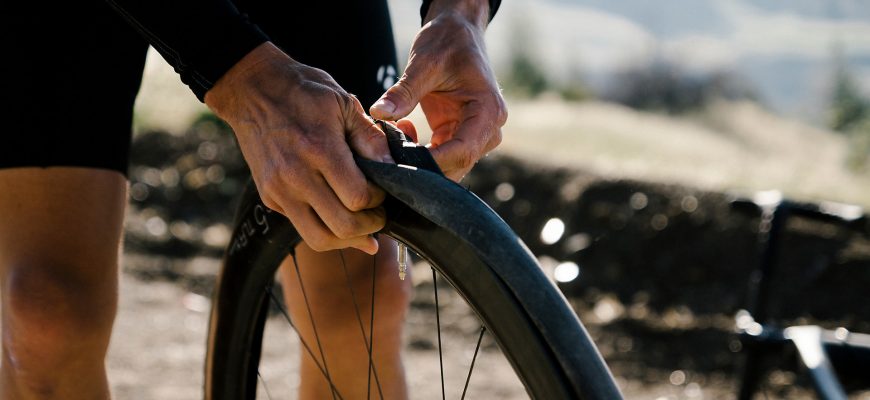
A complete bushing replacement is required if both the axle and the bearings fail. However, often when the bushing is jammed, the axle is in a normal state, it is enough to change the bearings. Often, both will still serve faithfully if they are well lubricated. Proper lubrication will prevent parts from wearing out under dynamic loads.
The bulkhead of the axial part of the wheel is associated with cleaning the axle and bearing balls from dirt. The removed parts must be temporarily placed in a solvent, then allowed to dry, lubricated and reinstalled. Bearings in a skewed position must be adjusted by returning them to a straight position. However, during the backlash, the parts are already faulty, so a replacement would be the best option.
Quality wheel repair is not only disassembly, replacement, lubrication or adjustment. At the last stage, all this chaos must be collected in reverse order. All parts of the sleeve mechanism are placed in the drum and carefully secured with locknuts.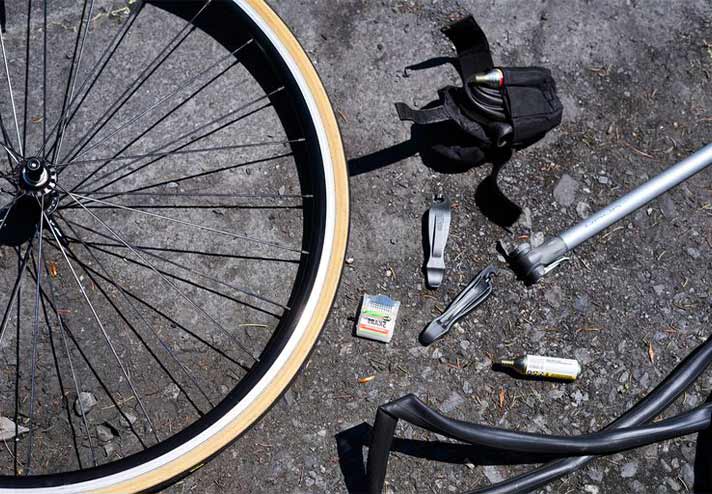 The drum is mounted on the spokes, after which they must be tightened by the number of revolutions by which they were loosened.
The drum is mounted on the spokes, after which they must be tightened by the number of revolutions by which they were loosened.
The spoke nuts are tightened in the opposite direction to the loosening. Here you need to remember the direction of loosening in order to tighten correctly. If the drum dangles, then you need to tighten the spokes harder.
The cassette is put on the hub in the following order:
It remains only to put the rear wheel on the frame. A chain is put on one of the stars, and the wheel is inserted into the grooves of the frame. To top it off, it remains only to tighten the nuts or eccentrics on both sides. After assembly, you need to pedal and see if the chain runs normally on the stars. We turn the bike over and start riding calmly!
Every active cyclist will have to deal with wheel problems in one way or another. Despite the ease of maintenance, the wheel at first can take a lot of time. However, if you remember how important wheels are to a bicycle, it turns out to be not so much. Moreover, with experience, the bulkhead of the wheel will take a few minutes.
Despite the ease of maintenance, the wheel at first can take a lot of time. However, if you remember how important wheels are to a bicycle, it turns out to be not so much. Moreover, with experience, the bulkhead of the wheel will take a few minutes.
Stels bikes are especially popular on the Russian market. They attract the attention of many cyclists with their excellent build quality and low cost. It is worth noting that the range of Stealth bikes is quite extensive. In stores you can find models for both experienced people and beginners.
Despite the high-quality assembly, these bikes break from time to time. Most often, you have to repair the rear wheel on the Stealth. However, before doing this, you need to understand the main nuances of such a repair.
Before dismantling the rear wheel of the Stealth bicycle, you need to find out what exactly it consists of.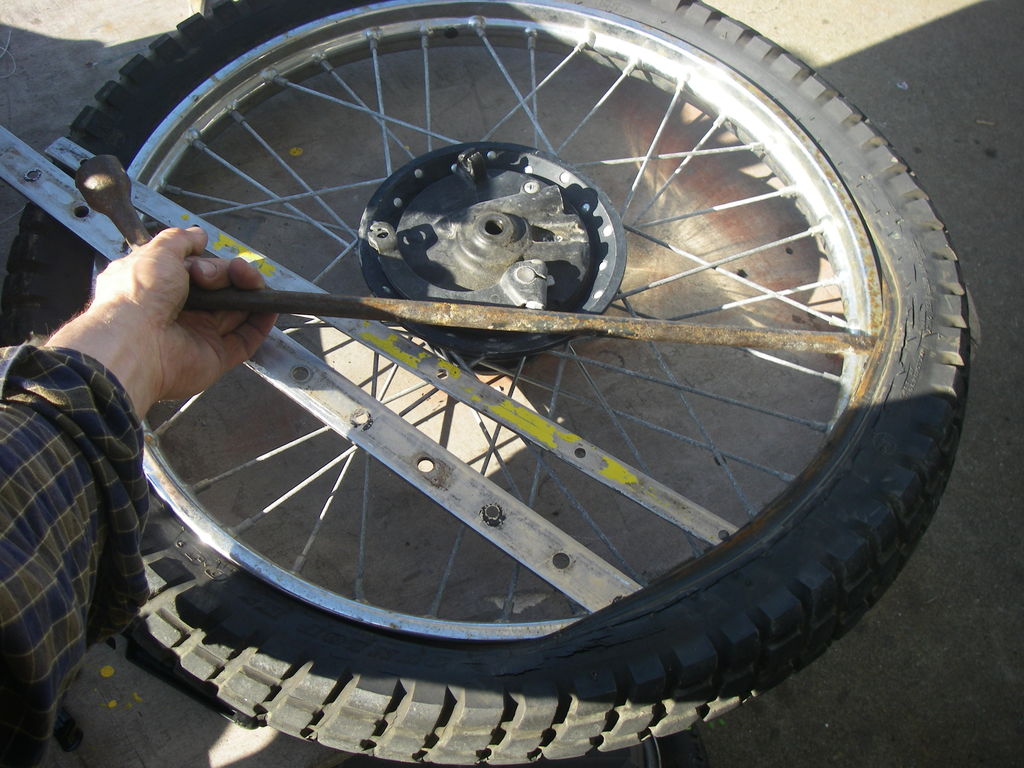
They affect handling great on the road. The comfort of cycling depends on the quality of the installed tires. Tires made of high quality rubber are installed on the front and rear wheels of the Stealth bike. With their help, you can ride comfortably even on wet roads.
The rim is one of the most important parts of the wheel, connected to the hub and equipped with spokes. Most Stels bikes use steel or aluminum rims. On bikes that are used for driving on dirt roads, reinforced rims with an additional stiffener are sometimes installed.
One of the most important structural elements of a bike wheel, it connects the hub to the rim. Spokes allow you to significantly lighten the weight of the structure without affecting its strength. They are made of titanium, aluminum or steel. Special nipples are used to connect the spokes to the rim. They are installed with pliers.
Hub - the main part of the wheel, which is responsible for its rotation.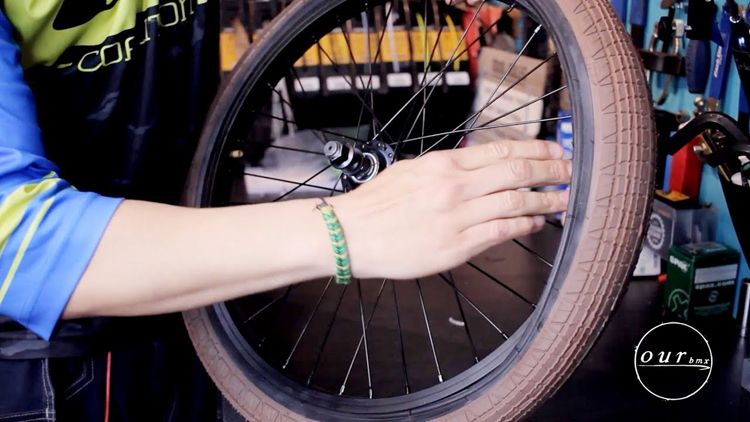 The rear axle of the Stealth bike has a rather complex design compared to the front axle. It is equipped with a special ratchet on which stars are attached. On the left, some bushings have an additional mount used to install brake discs.
The rear axle of the Stealth bike has a rather complex design compared to the front axle. It is equipped with a special ratchet on which stars are attached. On the left, some bushings have an additional mount used to install brake discs.
Every cyclist should know when to repair the rear wheel of a Stealth bike. Among the most common breakdowns are the following:
 It can break due to improper maintenance, normal wear and tear, overtightening of the cone, or the use of poor quality parts during the assembly process.
It can break due to improper maintenance, normal wear and tear, overtightening of the cone, or the use of poor quality parts during the assembly process.
You will also have to remove the rear wheel when the "eight" appears. This is a rather serious problem that all cyclists often face. The only way to solve it is to install a new wheel or buy a different rim.
The most common bicycle wheel failure is tube puncture. Before replacing it, you must completely unscrew the wheel. This is done as follows:

You are now ready to remove the tire. First you need to bleed the air remaining in the chamber by unscrewing the nipple. Then you need to use special blades to get rid of the tire. It is gently pushed with a tool from the side opposite to the nipple. When the tire begins to shrink, the blade should be gradually rearranged a little further. It must be removed carefully, without using much force.
When the tire is removed, the rear wheel of the Stealth bike is assembled with a new tube. It fits in an old tire. Then it must be carefully installed on the rim. You need to start from the side where the nipple is located. The tire must be put on the rim carefully so as not to accidentally damage the new tube. In this case, you need to look in which direction the protector is directed. There should be a special arrow on the rubber surface of the tire, with which you can determine the correct direction. When the assembly of the Stealth rear wheel is completed, it is screwed onto the bike.
Before proceeding with the repair, it is necessary to familiarize yourself with common hub failures. Among them are the following:
Many cyclists experience these problems. However, most often it is necessary to repair the sleeve due to the appearance of a strong backlash and cone constriction. All this can be accompanied by difficult rotation of the rear wheel. To fix this problem, you need to do the following:
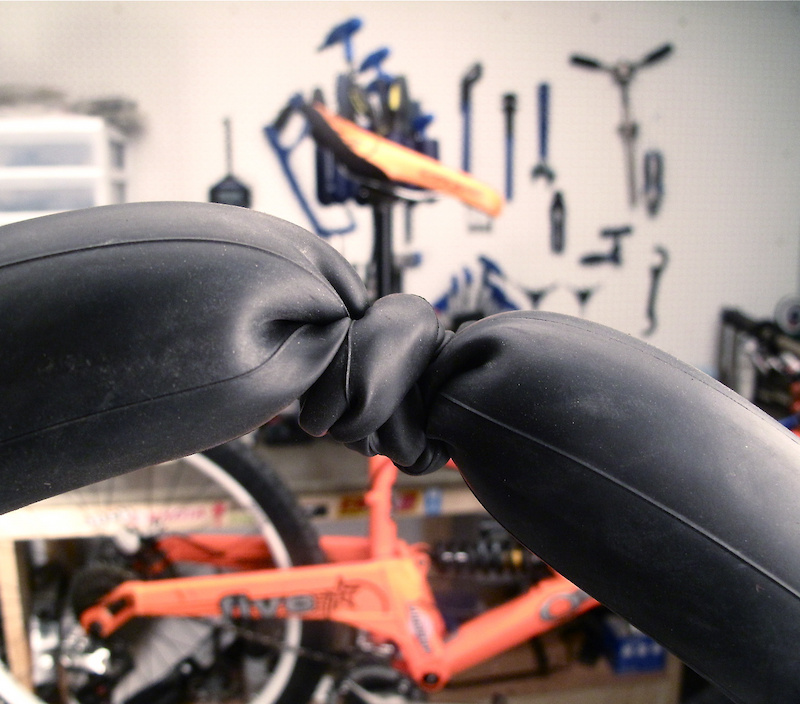
After completing the above steps, you need to put the wheel on the bike and make sure that the play is completely gone. However, before assembling the rear wheel of a Stealth bike, you need to understand the basic nuances of assembling the rear hub. To assemble it correctly, you must perform the following sequence of actions:
After completing the hub assembly, you need to install the wheel on the bike frame and check the bike's performance.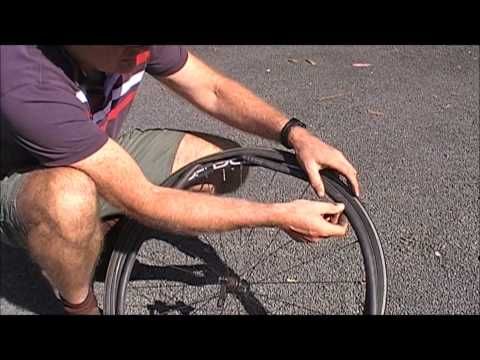 The rear wheel should spin freely.
The rear wheel should spin freely.
In order not to have to repair the bushing too often, it must be serviced regularly. To do this, periodically clean and lubricate the internal components of the bushing. Such preventive measures will help to extend the life of parts. However, before proceeding with the maintenance, you need to figure out what exactly should be used for lubrication.
It is recommended to lubricate bearings only with quality greases. Litol-24 oil, which is used in cars, is ideal for this. You can also purchase special lubricant mixtures for bearings. For example, products from Shimano are popular among cyclists.
It is worth noting that there are some types of mixtures that are better not to use for lubricating bicycle hubs. These include the following types of oils:
The above oil formulations are completely unsuitable for processing bicycle bearings.